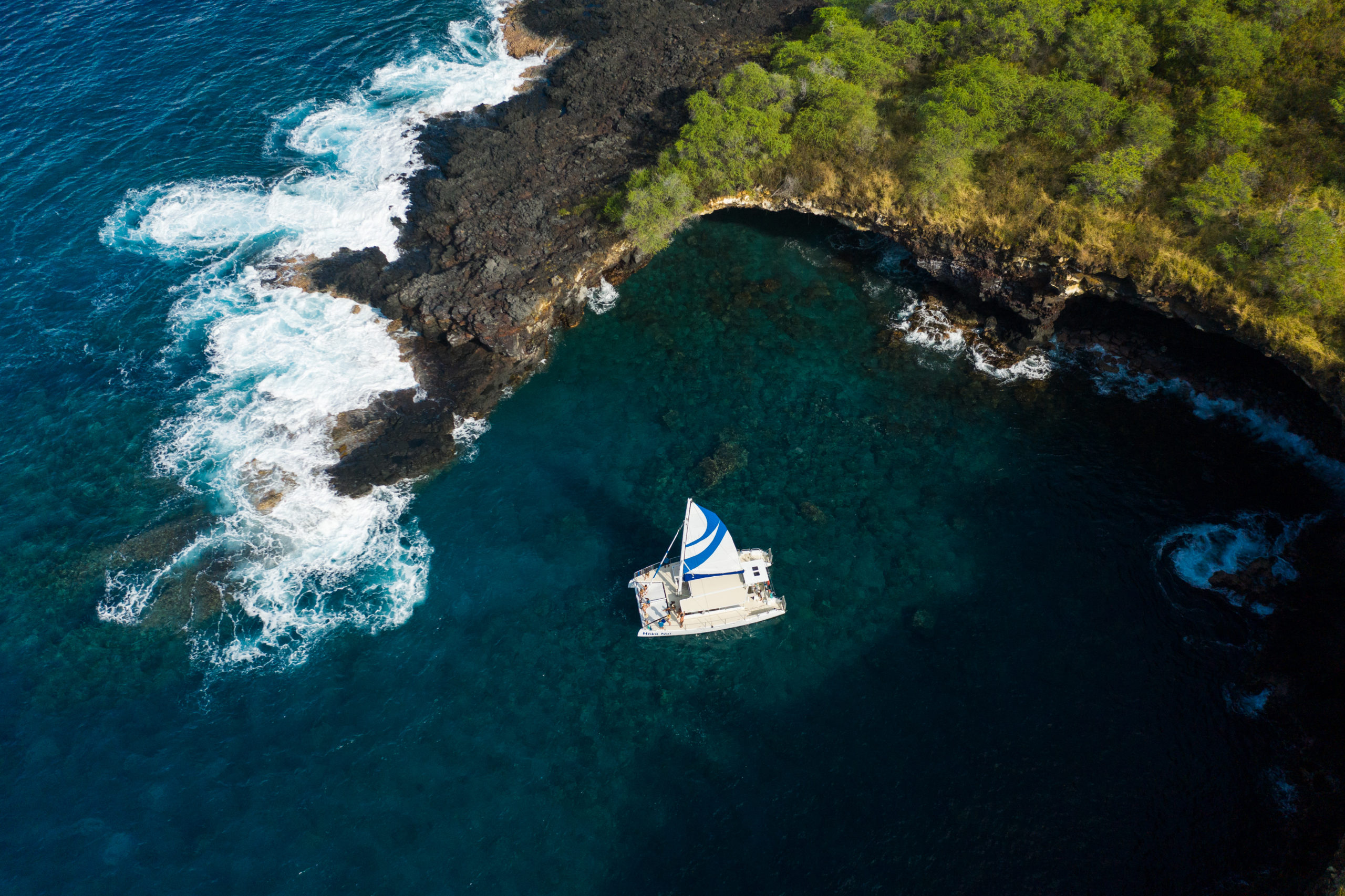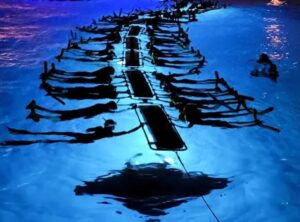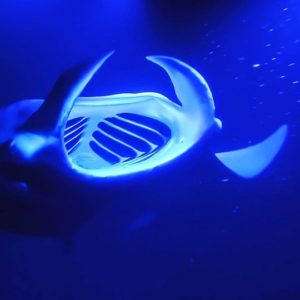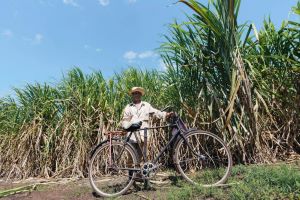The first thing on your agenda should be a snorkel tour where you will be able to see the Captain Cook Monument mentioned in the article by Donald MacGowan for Ezine Articles. He lists great historical points on the Big Island.
One of the unexpected joys of many people’s trips to the Big Island is their discovery of the rich and varied tapestry that history weaves around the Island of Hawaii. Hawaii is the only state in the union that has king’s palaces, temples to the gods of surfing and and architectural history that spans a millennium and a half. Many people don’t realize that the Kona Coast was an important region of major fishing villages, taro farms and religious centers for a millennium and a half. However, the Kona region rose to ascendancy as a religious and political center when King Umi founded his capital here in the 16th century.
In 1812, King Kamehameha established Kailua Kona as the Capital of his newly united Kingdom of Hawaii. For almost 400 years, temples and palaces around the Kona region served as a kind of “Rome of the Pacific”, one of the great political and cultural centers in Polynesia, until the capital of the Kingdom was moved to Honolulu in 1850 by Kamehameha III. Slipping into a sleepy, territorial back-water torpor, Kailua Town and the Kona District dozed gently through the decades of the plantation era and early statehood into modern times. Today, booming and exciting, this fast-paced area is the center of the Big Island’s financial and cultural reawakening in the new century. Just remember, when I describe the Kona District as a “booming and exciting…fast-paced area”, I mean “booming and exciting” in a very Hawaiian, mellow and relaxed way.
Some of the most important historical sites in all of Polynesia are right here in Kona—let’s take a quick tour of the Kealakekua Region of Kona, that portion which lies along the Hawaii Belt Road from Kainaliu south, turning at the junction with Highway 160 down to Napo’opo’o and into Honaunau. It was in this region the Kings of old ruled and dispensed justice; where the great explorer Captain James Cook spent time among the Hawaiians and ultimately lost his life; and where the two sustaining agricultural industries of ranching and coffee farming were born on Hawaii and flourish today.
Kainaliu Town
Napping gently on either side of Highway 11, Kainaliu Town is one of the principle commercial centers of Up Country Kona. Kainaliu grew up at the intersection of two donkey tracks that serviced the sugar, coffee and ranching industries, sometime after the construction of Lanakila Church in 1867. The star attraction in Kainaliu is, by far, the Aloha Theater and Aloha Angel Café. This historic and beautiful theater is still the center for stage productions of all kinds as well as cinematic shows; it is the centerpiece for the Kona Association for the Performing Arts (KAPA). Another of the town’s interesting attractions is the amazing Oshima Grocery and Dry Goods Store (“If we don’t have it, you don’t need it”). In addition the town boasts numerous other businesses, galleries, furniture, thrift, herbal medicine shops as well as several wonderful restaurants and coffee houses. Donkey Balls has a candy factory that offers fun tours and tasty samples and Captain Cook Coffee has a roasting house right in town that gives weekday tours. When the weather turns wet in West Hawai’i, or you need a relief from the heat on the beach, a day spent browsing and eating in cool, shady Kainaliu is a real treat.
Aloha Theater
The Aloha Theater and its cafe, serve as a gathering place for the community and the home of independent, classic and second run films as well as the Hawaiian International Film Festival and various community events. Construction of the Aloha Theater began in 1929 and was finished in 1932, long before Hawai’i was a state. Starting life as a silent movie theater, it survived the changeover to ‘talkies’ as well as the great fire of 1948 that destroyed much of it’s side of town. Still in use today as a performing arts center by the Kona Association for the Performing Arts, performances feature live music and dance as well as film. The Quonset-hut shaped original theater building and the original marquee still in use are very typical of the style used in other theaters of this period in Hawaii. The Aloha Angel Café associated with the theater is a marvelous gustatory find and offers a wide-ranging menu of entrees, baked goods and deserts and is open daily for breakfast, lunch, and dinner.
Kona Hongwanji
Mission Originally built in Ho’okena in 1897, this Shin Buddhist Temple was moved to Kainaliu in 1906. The stone arch was built in 1915 and the temple itself has been extensively modified through the years, although the current structure’s arrangement dates from 1980. On the main alter is a carved sandalwood image of the Amida Buddha which was consecrated in 1933.
Kalukalu Homestead (Greenwell Farm)/Greenwell Store/Kona Historical Society Museum
Members of the Greenwell Family have been important in Kona history and society since Henry Nicholas Greenwell bought 300 acres of farmland at Kalukalu in 1850. Leaving the British military service at age 23 for adventure in gold rush California, Henry Greenwell was injured off-loading supplies and he sailed to the Hawai’ian Kingdom in search of a doctor for healing. Once ensconced in Kona, and like many early pioneers in Hawai’i, Henry Greenwell had several businesses and served the community in many ways: he was not only a farmer, but also a rancher and sheep herder, dairy farmer, importer, school agent, postmaster and the Customs Agent at Kealakekua Bay. He married Edith Caroline Greenwell in 1868 and they raised 10 children. During his lifetime in Kona, he and his neighbors, competitors and partners presided over the massive agricultural change in West Hawai’i as the small, Hawai’ian kuleana, or family garden plots, were rapidly displaced by large scale sugar and coffee farms and ranches. The original Greenwell home at Kalukalu was torn down in 1960s, however the store Henry Greenwell built in 1875 is still standing and is operated today as a museum by the Kona Historical Society. Greenwell’s store was one of the very first commercial ventures to serve the growing upland Kona settlements; until then, poor wagon roads meant most stores and businesses were located along the coast at ports such as Kailua and Napo’opo’o. Greenwell Farms 15 acres planted in coffee which produces around a million pounds of coffee a year, is open for free tours Monday through Saturday from 8 to 4:30; tours last 15-20 minutes. In the Greenwell Store original buildings, the Kona Historical Society has its offices, archives and runs a small museum. The museum has an interesting array of artifacts from early Kona life and coffee and sugar farming as well as an impressive archive of historical photographs, which may be seen by appointment. The Museum is open weekdays only, from 9-3; $2 admission.
Uchida Coffee Farm
Have you ever wondered what life was like on a Kona coffee farm during the early 1900’s? The D. Uchida Coffee Farm is where you can listen and relive the story of Kona’s first Japanese coffee farmers. The present day Kona Historical Society has collaborated with the Kona coffee community, creating a project which both amuses and informs the visitor of the chronicles of Kona Coffee. It is a chance to peek into a past Kona life style which is close to being altogether erased. The Kona Historical society arranges tours daily.
Amy Greenwell Ethnobotanical Garden
Hawai’ian culture and society, due to the limited resources of island living, revolved around the efficient and knowledgeable use of a vast array of plants for building, medicine, food, clothing and just about every other aspect of life in the Hawai’ian archipelago. The Amy Greenwell Ethnobotanical Gardens preserves this ancient knowledge and the rapidly disappearing plants in a delightful garden which is now run under the auspices of the Bishop Museum. Amy Greenwell had a ferocious and wide-ranging curiosity about plants and their cultural uses, so this garden hosts not only indigenous Hawaiian plants and herbs, but also a variety of tropical botanical specimens from around the Pacific. The park is open from dawn to dusk seven days a week and there are free guided tours on the first and second Saturday of the month at 10 am.; other tours can be taken by arrangement.
Manago Hotel
Built in 1917 by a Japanese mail-order bride and her husband with an initial investment of $100, The Manago Hotel started out as a single house and evolved, through numerous remodelings, into the oldest continually-operating hotel on Hawaii Island. Kinzo Manago and his wife Osame bought the original cottage, stove and land with borrowed monies. Providing meals and futons to overnight guests, the Managos continually remodeled and enlarged the house to meet the rising demand of travelers on the Big Island. The toko-bashira, or good-luck post necessary to any Japanese business, was acquired back in 1917. At that time all they could afford was a coconut log which the artist soaked in the ocean to soften and to keep termites out. When you visit, be sure to see it in the lobby, still hard as a rock, still beautiful after nearly 100 years. Today, the grandchildren of Kinzo and Osame operate the Hotel with all the tradition, hard work, affection and commitment to service that their parents and grandparents put into the Hotel. The restaurant still serves world famous stuffed pork chops, best on the Island. Whether you come to eat, to stay or just to see this wonderful piece of living Hawai’ian history, be sure to take a stroll through the lobby and look at the photographs of Old Kona.
Kealakekua Bay Archaeological and Historical District/Captain Cook Monument
Kealakekua Bay is one of the most truly magical spots in the State of Hawai’i. Beautiful and peaceful, Kealakekua Bay (Pathway of the Gods) opens beneath steep, beetling cliffs on the ancient surfing beach along the shoreline of Napo’opo’o Village. The site of arguably the most important single event in the history of Polynesia and of unparalleled, majestic scenery, Kealakekua Bay is today home to pods of frolicking dolphins, hosting the greatest density of hammerhead sharks anywhere in the Pacific Ocean and providing some truly breathtaking snorkeling. Captain James Cook made his longest visit with, and deepest impression on, the native Hawai’ians when he first arrived late in November of 1778. And it was along the shores of Kealakekua Bay where he met his tragic end in February 1779 during his second visit. Forever altered from the moment of Cook’s arrival, the evolution of Hawai’ian society would soon change in ways the Native Hawai’ians could scarcely have imagined just days before the Englishman made shore here. In 1874 British sailors erected the current white obelisk monument to Captain Cook on a spot quite a bit distant from where he was actually killed, although there is a cement memorial in the tidal zone, west along the shore from the monument, marking the actual spot he was killed. The area remains a piece of British Territory on American soil and is maintained by Brit sailors passing through. One can see the monument, across the bay from Napo’opo’o, rising among the ruins of Ka’awaloa Village. Today, most tourists choose to come by boat to visit the actual monument. However, the monument is also accessible by hiking a trail down from the highway; this hike takes 2-4 hours round trip and drinking water is not available anywhere along the journey. Perhaps the most sought-after snorkeling area in Hawai’i, visitors also frequently kayak from Napo’opo’o to the monument to enjoy the Class Triple-A waters and abundant sea life there. High along the cliff walls can be seen numerous burial caves of the iwi (bones) of Ali’i, and in the late afternoon light, a greyish streak is visible on the northwest wall. Local legend has it that a canon-ball fired by Cook to impress the Hawai’ians left this streak as it smeared and bounced along the cliff. Close in along the beach, historic Hikiau (Moving Current) Heiau stands through the ages, witness to the tsunami of enormous changes that swept through Hawai’i with the coming of Cook and the Europeans, which began right here at Kealakekua Bay.
St. Benedict’s Catholic Church (Painted Church)
In 1899, Catholic Father John Velghe landed in Honaunau and built his parish church. Having decorated the inside of previous parishes in the Marquesas and Tahiti with painted scenes from Biblical stories, he proceeded to decorate the interior of the church with scenes whimsical to inspiring, earning this church the nick-name it is most commonly known as, “Painted Church”.
Place of Refuge/Pu’u Honua O Honaunau National Historic Park
One of the most enchanting, beautiful, and restful spots in all the Hawai’ian Islands, Pu’u Honua O Honaunau is a place of ease and regeneration for even the most weary and jaded soul. Of enormous historical and cultural significance, the sacred grounds at Honaunau are the best-preserved and largest remaining Pu’u Honua, or Place of Refuge, complex in Hawai’i. The temple and royal complex and royal residences at Pu’u Honua O Honaunau, established as a National Historical Park in 1961, are vast, well preserved and pervaded by a soul-filling peace. On the grounds of the refuge itself stands the stone platform, ‘Ale’alea, which was used for sports, the Keoua Stone, legendary resting place of the Ali’i and the Ka’ahumanu Stone, where it is said the favorite wife of Kamehameha the Great hid after quarrels with her husband. Down the center of the Park runs the Wall of Honaunau, 100 feet long, 10 feet tall and 17 feet thick. It separated the palace grounds of the Ali’ from the temple grounds of the Pu’u Honua. The wall was made without mortar or dressing the stones and has survived in this tectonically active area for over 500 years. In the royal residence area are the canoe landing at Keone’ele Cove, Heleipolala Fishpond, several reconstructed residences and a canoe hale as well as the famous Hale Keawe, where the iwi (bones) of as many as 23 Ali’i ancestors of Kamehameha were once stored.
King’s Trail/Lava Tube
The King’s Trail, or Ala Ali’i, was renamed the Trail of 1871 when residents were asked to square their tax bill to the monarchy by repairing the over-grown and run-down trail. The trail leaves the road from the City of Refuge proper along the road to the National Park Picnic Area, or can be joined by the Shoreline Trail, taken out of the south end of the picnic area. Along the trail are ruins of several Hawai’ian villages, Heiau, cattle pens and so forth. The trail also crosses over a large lava tube, which is only about 150 feet long and leads to spectacular views of the ocean, where it emerges from the cliff about 40 feet above the water.
To celebrate the conclusion of your Historical Soirée, as long as you are in Honaunau you really ought to plunge into the refreshing waters at Honaunau Bay at wonderful Two Step Beach, swim with the colorful tropical fish, amazing green sea turtles and playful dolphins . Or, you could stop in for a cup of famous Kona Coffee at any one of a number of local coffee shops between Captain Cook and Kainaliu…not the harsh sameness of the ubiquitously monotonous Starbuck’s, each individually special Kona coffee cafe reflects the personality of the local growers and roasters who produce Kona Coffee, widely held to be the best in all the world. Also, the singular and exclusive galleries and stores along this stretch of highway makes perfect shopping for completely unique gifts to take home.









